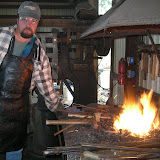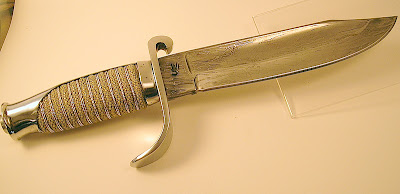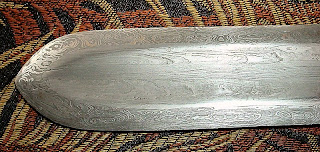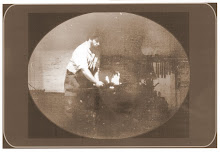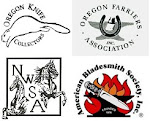The Blades That I Use
Some of the most abused blades you could make are "Hoof Knives" and "Nipper Blades" also known as hoof nippers for Horseshoeing.
I test my blade hardness and Tempering and Design on these blades. The style of knives range from as many different styles as there are styles and techniques of Farriers. I make the style of hoof knives I like.
These blades have to be hard enough to hold a good edge, If it cuts smooth through thick leather with ease and absolute control, it works great on horse hooves.
If the blade snaps it can seriously injure you usually by cutting at various depths from forearm to thumb and or the horses flexor tendon.
There are 2 Farriers who have greatly impacted the Farrier Industry and who stand out among others-who are alive today-who bring a new meaning to the art of Farriery.
Bob Marshall from Langley BC, who runs the best hands on clinic for advanced Farriers around and Dave Duckett who has the best lectures I've heard, it's just as impressive to watch them smack iron.
I've given both of these men a hoof knife,
Dave's was a pattern welded blade of 15n20, 1095, 1080 and if I remember correctly a Mahogany or walnut handle.
Bob's was a Mahogany handle with a differential temper 15n20 blade. Both are marked with my insignia W.A.S. trademark that I use on both blades and horseshoes.
Hopefully they like them, If not they just collect dust like the tools that I have that just don't feel quite right.
Although I can, But don't shoe the same type horses. The horses that I shoe are Gaited as in 3 gaited, Hackney, Etc.
With a little imagination, their techniques can be easily applied in all aspects, with some modification, from hoof preparation to fitting shoes to forging efficiency to smacking iron with impeccable precision.
The shoe that most Farriers look at that makes them think of these Men is the "Roadster Shoe" also my practice shoe forever.
A special thanks to Valley Farrier/Valley Forge and Tool for their hard work and effort to make it possible for the Farrier Industry to learn from these professionals.


